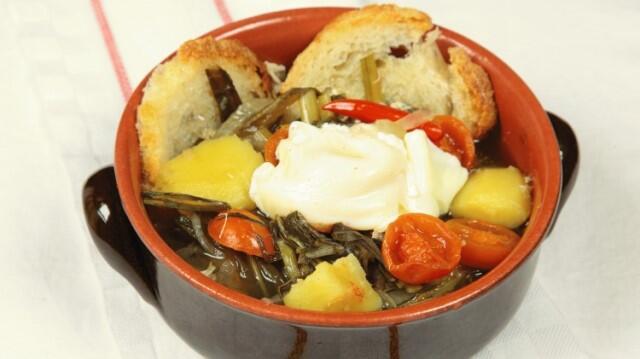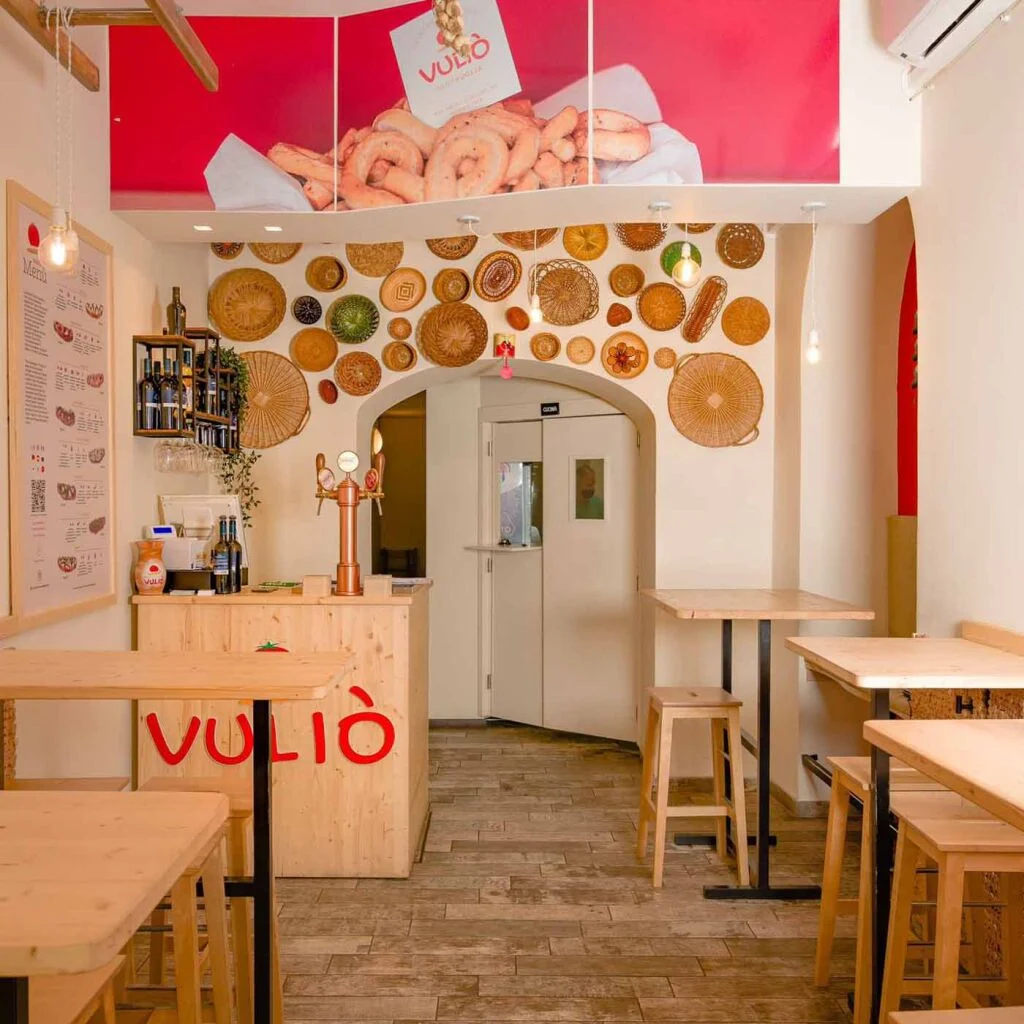Lazio is a region in Central Italy, and with 6 million inhabitants it is the second most populated region in Italy. Long before the birth of Rome, this territory was called Latium by its inhabitants: the Latins. Its name derives from Latin Latus, which means extended – it is a vast territory with plains, hills and mountains. It’s a territory crossed by rivers (including the largest and most important, the Tiber) and volcanic lakes. It’s a region therefore made up of different landscapes that allow the cultivation of grains, vegetables, fruits, olives and grapes. And it is one of the first places in Italy for the production of oil and wine. There are many herds of sheep, cows and buffalos and, thanks to its proximity to the Mediterranean Sea, it is also well developed for fishing. The weather is fantastic: the wind from the sea mitigates the winters and refreshes the summers, so it does not often rain and the temperature is usually pleasant.

And of course, the most famous city in Lazio is Rome. “All roads lead to Rome,” goes the Italian proverb. This stems from the efficient system of roads developed in ancient Rome that, literally, led to Rome. But it’s not only the roads that lead to Rome. If you follow the history of cooking, you follow the evolution of culture, society, tradition and progress: which all started in Rome. So it’s no surprise that there are both food tours and wine tours aplenty in the Eternal City.
Each Italian dish has its own history and, even today, many scholars debate the exact origin of each one of them. And each dish can be found in the different types of eating establishments we have here in Lazio. You have certainly heard of places called Ristorante, Osteria, Trattoria and Taverna. But what is the difference between these?
The Differences Between Types of Italian Restaurants
RISTORANTE: From the French word restaurant (from restaurer, “to give rest”), this is the most recently named place to eat. The first ristorante was opened in the 16th century. Boulanger, a Parisian chef in 1765, transformed this place of rest into a place where customers could sit in their own reserved seat and have the opportunity to choose food and wine from a menu.
OSTERIA: The name comes from Latin hospite, which means to host guests. This is a place where the main function is hospitality. Locales like this existed in ancient Rome and were called enopolium. They were places of refreshment in passageways or trade-ways, which then became meeting places with an emphasis on socializing. The wine was the main element that everything else revolved around: food, lodging and prostitution. They were meeting places reserved only for men. After the Second World War, they became less frequented, but in recent years the osteria has evolved into a more casual and relaxed atmosphere in which to dine.

TRATTORIA: This used to be a public place for the common Italian people to buy and consume food on site. People would need to bring their own wine to enjoy with the food sold. The name comes from the trattore, “he who knows how to handle and prepare food.” These places were known and sought after for local dishes and regional cuisine. They were very inexpensive, and therefore attracted many people. This also holds true today. The service and the furnishings are still simple, but the quality and quantity of food offered is often excellent.
TAVERNA: This is a public place where customers can order drinks and food. A taverna is usually rustic in decor, and the menu is not very elaborate. This was an alternative to an osteria (which served mostly drinks) and a trattoria (which served only food). Tavernas served both, and were therefore the first form of a restaurant, albeit rather casual.
Lazio is a region divided into five provinces, each being different in history, customs, traditions, dialects and also cuisine. Provinces may contain different cities but are named after the largest city within their borders.
What to Eat and Drink in the Provinces of Lazio
ROME: Rome is not just a city… but also a province. As for the cuisine of the capital, it is simple and based on ingredients that are easy to find. Typical items include artichokes, broccoli, chicory, cod, fresh and sea water fish, pork cheeks, tripe, oxtail, lamb, and cheeses like pecorino, caciotta, ricotta, scamorza… I could sit here and list many ingredients that serve to make the dishes we find daily on our tables. The wines to match are typical of the area around Rome. We have whites from Frascati or reds from the sangiovese and montepulciano grapes surrounding the capital. These wines are fresh, fruity, intense and slightly tannic – good to balance the fatty foods and tastes typical of our table.
FROSINONE: Frosinone is located southeast of Rome, the capital of an area called Ciociaria. Because of its strategic position, it connects the rest of Italy with the southern regions and has always been an area historically invaded and conquered by various invaders – including the first Romans. In this region, you can taste typical dishes and products of a farmer’s kitchen – traditional peasant cuisine. Among the first would be tonnarelli alla ciociara with tomato sauce, fettucine with chicken giblets, pasta and beans with pork rind, polenta with broccoli and sausage. Other dishes include sausages, lamb chops, chicken al diavola, simmered mutton, and snails in tomato sauce. Frosinone has an abundance of broccoli, cauliflower, beans with pecorino cheese, peas, chickpeas, and other types of beans. Typical desserts include sweet ricotta, struffoli fried with honey, and the famous ciambellette cookies made with red wine. To maintain tradition in these regional dishes, they can be paired with these fine wines: a “Passerina del Frusinate” (white, fruity and dry), an “Atina” red made with the cabernet sauvignon grape, or the famous “Cesanese del Piglio,” soft and slightly bitter in taste.

LATINA: Latina is located south-west of Rome and is one of the youngest cities in Italy, although it’s the second largest city in Lazio by population after Rome. It was founded under the name of Littoria by Mussolini in 1932. It is located in a plain called Agro Pontino: a large swamp area that was dredged and rehabilitated during the fascist period, very close to the Tyrrhenian Sea. Part of the city stretches along the coast, and this proximity to the sea affects the local cuisine. Both starters, first and second courses are mainly seafood: clams, shrimp, calamari, oysters, octopus, lobsters, anchovies, flounder, snapper… each one tastier than the last. The local white wines are made with the trebbiano and malvasia grapes, and the reds are made from merlot. Both of these are from the Circeo DOC (Denominazione di Origine Controllata). The reds of Cori DOC, a nearby area, are produced with Nero Buono. Both are dry wines, harmonious and full of minerality. These wines were born to marry the local cuisine.

RIETI: Rieti is located east of Rome and is the geographical center of Italy. In fact it is called Umbilicus Italiae (the umbilical cord of Italy) and is located in a large and very fertile plain surrounded by high mountains and the river Velino. Rieti is a city founded long before Rome, during the Iron Age around 1,000 BC, before being conquered by the Romans in 290 BC. Rieti is a city surrounded by beautiful landscapes and so it is visited by many tourists. The typical dishes are handmade pastas like pizzicotti or strengozzi, which are seasoned mainly with tomato, olives and hot peppers. The pig is the animal most commonly used as meat in local dishes: the sardamirelli is made with the intestines of the animal and flavored with fennel and red pepper. This is perhaps one of the best known dishes of the province. Rieti is also famous mainly for the production of olive oil. The oil of Sabina is the best in Lazio, and among the first in Italy. The wines of Rieti and the Colli della Sabina DOC – whether white, rosé or red – offer a spicy and pleasing aroma coupled with a delicate and intense flavor that blend well with the local products.

VITERBO: Alphabetically, the last province in Lazio but certainly not least in terms of history and tradition. The city has ancient origins (from the Latin Urbs Vetus, meaning Old Town) and has a vast medieval town center surrounded by high walls. It’s also known as the City of the Popes: in the 13th century, the papacy was held there for about 24 years. The area around the town is named Tuscia by the ancient inhabitants, I tusci, or the Etruscans. It is located north of Rome and is very close to the border of Tuscany and Umbria. Its cuisine is a perfect mix between Roman flavors, Tuscan aromas, and the simplicity of the Umbrian kitchen. Traditional dishes include acquacotta, a vegetable soup from fields in the area, giubba e calzoni, a lamb stew made with pork lard and tomatoes, or sbroscia – a fresh-water fish dish served over bread and with broth. The pasta is handmade; gnocchi and strozzapreti (“strangling priest”). Meat dishes consist of chicken and rabbit, bred in the courtyard of the house. There are many wines from this area; the red and aromatic Aleatico di Gradoli is good with desserts. And the famous Est! Est!! Est!!! di Montefiascone is excellent with fish. The Orvieto Classico is perfect with soups, and the Vignanello pairs nicely with many meats and local cheeses.

After everything I’d told you about this region, I think that the next time you come to visit Rome, you won’t stop there!












